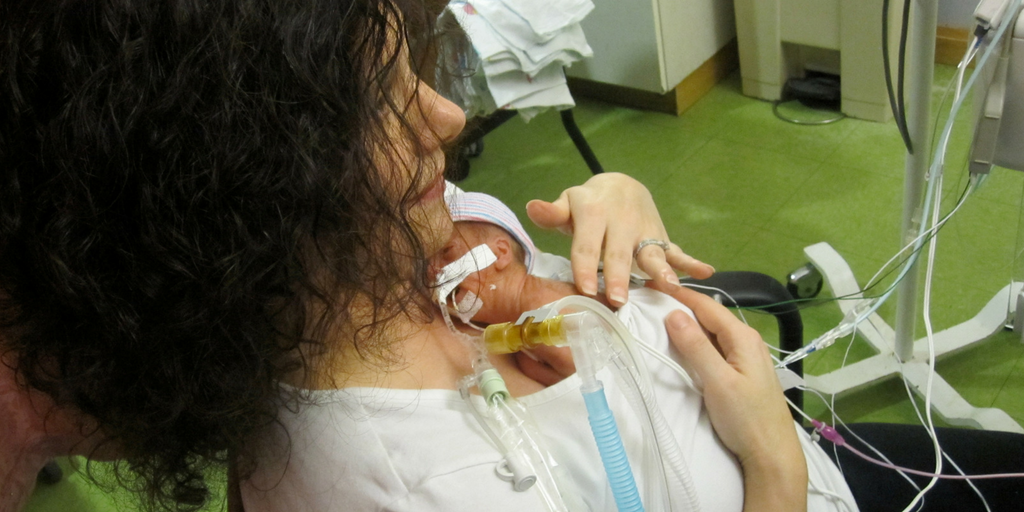Preventing Preterm Labor

In the US, roughly 15% of all babies are born prematurely (before 37 weeks).
That’s a lot of premature babies!!
Alarmingly, this figure has actually increased steadily over the years and nobody really knows why.
Of these babies, the majority of them are born between 34 and 36 weeks. These are called “late-preterm births.” But the really scary ones are the 12% born between 32 and 33 weeks, the 10% that are born between 28 and 31 weeks, and the 6% that arrive sooner than 28 weeks.
Preemies face an increased risk of lifetime disabilities, such as intellectual disabilities, learning and behavioral problems, vision and hearing loss, cerebral palsy, and chronic lung problems.
In short: you don’t want this.
But with all of the miscellaneous aches and pains associated with pregnancy, it’s really hard to tell what’s what!
So, what to look for when it comes to preterm labor? Here’s the cheat sheet (courtesy of March of Dimes).
If you are less than 37 weeks along, call your doctor immediately if you are experiencing any of the following symptoms:
- 4+ contractions in 1 hour — either with or without pain; menstrual cramp-like pains (this one is tricky for people with frequent Braxton Hicks, but you’ll get to know your body over time to know what feels “normal” and what doesn’t)
- Intense vaginal pressure or pressure on your bottom; a sensation that the baby is going to “fall right out” — or that you’re about to have the biggest poop in your life
- Increased discharge; loss of the mucus plug (aka “bloody show”)
- Persistent lower back ache, or one that comes and goes (this could also be kidney stones, which are not uncommon in pregnancy ~ these are fun, lemme tell ya!)
- Bleeding
- Steadily leaking fluid – or, a sudden gush of fluid
- Increased bowel movements or diarrhea
- A decrease in the baby’s activity; fewer kicks
- A sense that something just isn’t right
Talking to Your Doctor about Preterm Labor Symptoms
Some women worry about bothering their doctor, but don’t! This is why they get paid the big bucks, sister. And believe me, they would much rather prevent a catastrophe. So if something feels wrong to you, CALL them. Seriously. Just call.
At least you’ll know. You know?
Most OB’s offices have an advice line you can call 24/7. Keep this number with you throughout your pregnancy. I’d be surprised if you don’t have to call a handful of times along the way.
When Things Get Confusing
(a la: is that an earthquake or are my neighbors having s-ex again?)
Braxton Hicks Contractions VS. “Real” Contractions
By 24 weeks, you may already be experiencing Braxton Hicks. BH is a tightening of the uterus. You can put your hands on your belly and feel as it becomes hard as a rock, then softens again. Some women get them regularly – and some never get them at all. They can be brought on by s-ex, physical exertion, dehydration – or for no particular reason whatsoever.
The difference in BH and real contrax: Braxton Hicks are irregular and won’t intensify over time.They may go away after you relax and have a few glasses of water (this was always my litmus test). “Real” labor contractions will become more regular and more painful over time and will cause your cervix to soften and dilate (which you won’t feel). The only real way to tell is to be examined.
Round Ligament Pain VS. Preterm Labor
Ask yourself: WHERE is the pain (predominantly)? Round ligament pain is the result of stretching of the uterus and is completely normal. RLP may come on very suddenly and may be sharp, or (just to confuse you)… they can persist and feel dull and achy. The pain will be along the bikini line, commonly on the right side, and can cause discomfort from the groin to the hips.
With preterm labor cramps, the pain will be in the area above the pubic bone and below the belly button, just like a menstrual cramp. You may also be having pain in your lower back.
Leaking Urine VS. Leaking Amniotic Fluid
How does it smell? Leaking a little pee every now and then is oh-so-common during pregnancy, but you need to be sure. Smell your underwear. Does it smell like pee/ammonia/old popcorn? If yes, it’s pee. Amniotic fluid, on the other hand, is usually odorless or sweet smelling.
If you aren’t sure, consider the quantity and frequency. A small trickle that doesn’t stop is likely to be amniotic fluid — and so is a big, sudden gush. The only way to know is for your doc to test the fluid in his/her office. They will test the pH and look for the fluid to “fern” under a microscope, which is indicative of amniotic fluid and hence, ruptured membranes.
The pH test is super easy and quick (I had one) and can be done in your doctor’s office in about 10 minutes. Painless.
Not to be cliché, but the bottom line is better safe than sorry, gals!
~~ For Addison Lewis, sweet butterfly – Always in our Hearts ♥
For more information on preterm labor, please visit these wonderful sites:
Related:
- Thinking about registering? Check out Amazon for quick, easy baby registry [Registry Cheat Sheet, for your reference]. Also, a 10-15% Registry Completion discount. Yoohoo!
- What Every Pregnant Woman Should Know about Preeclampsia